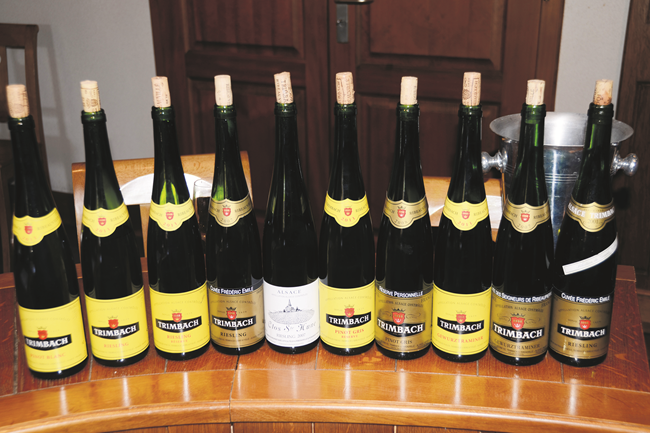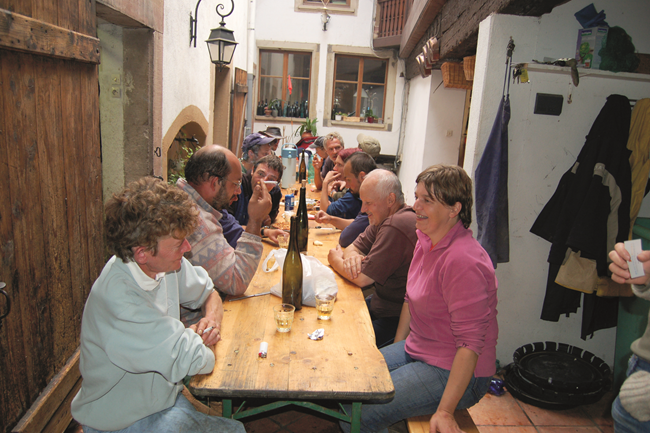Is the Alsace France’s New Wine Frontier?

In the shadow of the Vosges mountains, find out what makes Alsace wines special.
Perched in the far north east of France, the Alsace region is an outlier in many ways. As any local tourist guide will emphatically tell you, Alsace is French – and NOT German. In fact, the region has only ever been a part of Germany during brief periods of imperial expansion, but one could be fooled by its vividly painted half-timbered dwellings that would not be out of place in Baden-Württemberg on the other side of the border.
Alsace’s wine culture also expresses the region’s proximity to its neighbour to the east. Grape varieties of French origin such as Pinot Gris, Pinot Blanc and Pinot Noir are joined by the Germanic Gewürztraminer and Riesling. And unusually in France, these varietal names are proudly displayed on bottles of Alsace’s appellation d’origine wines. Alsace’s most famous wine villages, such as Riquewihr, Ribeauvillé and Kaysersberg, are found in the Upper Rhine département, with Colmar as its capital.

© MARC KREYDENWEISS
It is here that the Vosges mountains to the west reach their highest peaks, creating a rain shadow that makes Colmar France’s second driest city after Perpignan in the far south. Long continental summers, steep, well-exposed vineyards and cool nights combine to ensure fully ripe grapes that give complex, rich flavours. Most of Alsace’s superior grand cru vineyards are found in the Upper Rhine, where soils are so complex and varied that limestone pebbles, clay, gravel and schist might all be found within metres of one another. To be labelled as grand cru, Alsace wines (albeit with a handful of exceptions) must be made with one of the four ‘noble’ white grape varieties: the steely, long-lived Riesling; the grape-scented Muscat; the exotically perfumed Gewürztraminer; and the full-bodied, oily Pinot Gris.
Levels of sweetness in Alsace wines vary wildly, from bone dry to the sweet, luscious, late-harvested sélection de grains nobles wines, made from hand-picked shrivelled berries that have often been attacked by noble rot. It can sometimes be difficult to know the residual sugar content of an Alsace wine before pulling the cork, although producers are increasingly using style codes on their back labels to help guide the consumer. Not to be overlooked is the Lower Rhine, (confusingly) located in the north of Alsace. Although the wines are generally lighter in style, stellar estates, such as Marc Kreydenweiss in Andlau and Domaine Bernhard & Reibel in Châtenois, make exceptional wines that adorn the lists of many of France’s top Michelin-starred restaurants, as well as the cosy winstubs of nearby Strasbourg.
DOMINIC’S CHOICE
CHOICE WINE: Riesling ‘Clos Ste-Hune’ 2017
CHOICE WINE: Pinot Gris Grand Cru ‘Moenchburg’ 2020
CHOICE WINE: Gewurztraminer Grand Cru ‘Hengst’ 2011 Vendange Tardive
From France Today Magazine
Lead photo credit : © DOMAINE TRIMBACH
Share to: Facebook Twitter LinkedIn Email
More in alsace, Alsace vineyards, French wine, wine
Leave a reply
Your email address will not be published. Required fields are marked *



